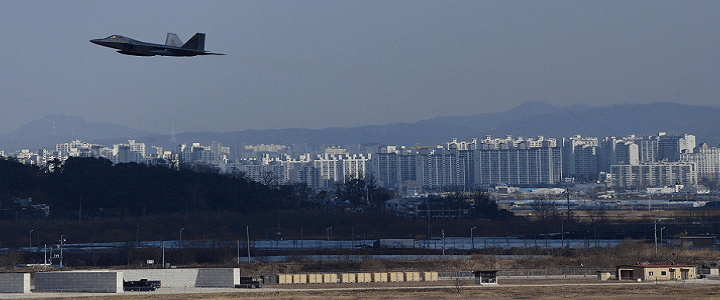The historic meeting Friday between Republic of Korea President Moon Jae-in and Democratic People’s Republic of Korea Chairman Kim Jong-un continues to confound and perplex the world’s security analysts. Opinions are divided between whether this is the best news the world has received in God knows how long, or it’s simply one more example of North Korea’s long history of deceptions designed to trade short-term sanctions relief for long-term mistrust.
It’s probably best to treat it like a little of both.
When he stepped across the demarcation line in Panmunjom, Kim became the first North Korean to cross into South Korea since the United States and Soviet Union divided their post-war responsibilities on the peninsula in 1945. That alone proves Kim is different than his father and grandfather. But like the North Korean “cheer squad” that gained notoriety during the Winter Olympics, beneath the dazzling exterior there is still a disturbing history.
A trail of broken promises
To see the history of North Korean deception, one need look no further than the “Joint Declaration of the Denuclearization of the Korean Peninsula,” which the two countries signed in January 1992. The first of six points in that agreement stated, “The South and the North shall not test, manufacture, produce, receive, possess, store, deploy or use nuclear weapons.” That agreement led President George H.W. Bush to withdraw American tactical nuclear weapons from the South.
But clearly, the North had no intention of maintaining its end of the bargain. It violated every single one of the six points over the course of the next 14 years on the way to testing its first nuclear device in October 2006.
The most recent pronouncement that the two sides are committed to “fully implementing all existing agreements and declarations adopted between the two sides thus far,” revives a small hope that this is indeed a new era. But it’s an understatement to say the Trump administration needs to remain cautious, a fact that newly confirmed Secretary of State Mike Pompeo acknowledged.
“This administration has its eyes wide open,” Pompeo told ABC’s Jonathan Karl Sunday. “We know the history. We know the risks.” While many (me included) lamented the departure of Lt. Gen. H.R. McMaster from the administration, the new national security advisor, Amb. John Bolton, is the right man to have on the job now.
Bolton and Pompeo will be both eager to secure a foreign policy legacy for President Trump, but they are both hawks who know full well the dangers of placing too much trust in Kim’s words. Trust, but verify.
A Historic Agreement Nonetheless
Even so, there is reason to be encouraged by the recent developments.
The two leaders’ joint statement that seemed to plow new ground in many respects, beginning with a pledge to formally end the Korean War. Kim and Moon “solemnly declared before the 80 million Korean people and the whole world that there will be no more war on the Korean Peninsula and thus a new era of peace has begun,” the statement read. This is nothing short of stunning. The two countries have maintained only a perilous ceasefire since 1953.
But at what cost would this peace come? The withdrawal of U.S. forces from the Korean Peninsula has traditionally been viewed a a precondition for a lasting North-South peace. But the latest joint declaration didn’t make any mention of this demand. The two sides pledged to increased cross-border movement, including reunification of families who were divided by the hardening of the border.
President Trump should be fully prepared to hear that demand when he meets with Kim later this month; he’d better have an answer ready in his pocket.
The agreement also did not include another assumed precondition: reunification. The west has long assumed that the North’s ultimate goal is to reign over a unified Korean Peninsula. But as I argued last week, it’s entirely possible that Kim is perfectly happy maintaining his power on the north side of a formalized border. The absence of any hint that the two sides discussed any ultimate reunification is encouraging.
We’re a long way from a permanent peace in the region. But there is every reason to look to the future with cautious optimism.




